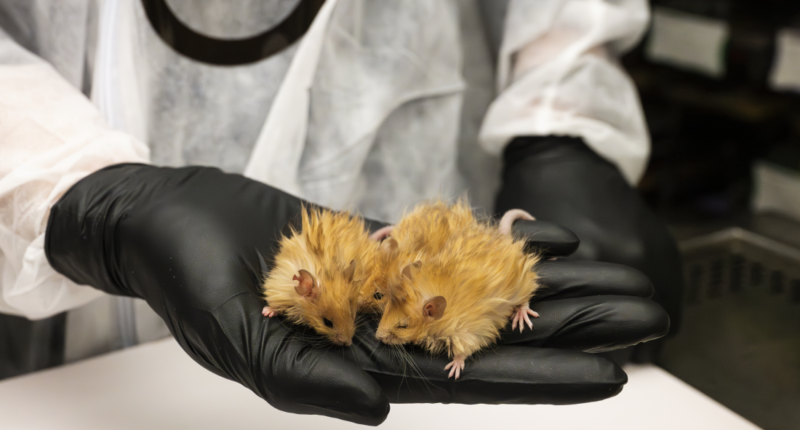Table of Contents Show
A Dallas-based biotechnology company called Colossal Biosciences has successfully made “woolly mice” that are a big step toward saving the woolly mammoth from extinction. These genetically modified rodents showcase thick, wavy fur and enhanced cold tolerance, marking a pivotal advancement in the field of de-extinction.
Genetic Modifications Leading to Woolly Traits
The creation of these woolly mice involved precise genome editing techniques. Scientists targeted specific genes associated with hair characteristics—such as color, texture, length, pattern, and follicle development—to induce mammoth-like features. Notably, genes like FGF5, involved in the hair growth cycle, and MC1R, which regulates melanin production, were modified. Additionally, a gene linked to lipid metabolism was altered to potentially enhance cold adaptation. The resulting mice exhibit elongated, golden-brown fur approximately 5 centimeters in length, closely resembling the woolly coats of mammoths.
Implications for Mammoth De-Extinction Efforts
This breakthrough serves as a proof of concept for Colossal Biosciences’ ambitious goal to resurrect the woolly mammoth. By demonstrating the feasibility of introducing mammoth-specific traits into a living organism, the company moves closer to its objective of creating a cold-resistant elephant-mammoth hybrid. The next phase involves applying similar genetic modifications to Asian elephants, aiming to produce the first mammoth-like calf by 2028.
Ethical Considerations and Scientific Discourse
The endeavor to revive extinct species, particularly the woolly mammoth, has sparked extensive ethical debates. Critics question the allocation of resources to de-extinction projects, suggesting that efforts might be better directed toward conserving existing endangered species. Additionally, concerns arise regarding the ecological implications of reintroducing species into modern ecosystems. Proponents argue that such projects could restore ecological balance and combat climate change by reviving keystone species.
Future Prospects in De-Extinction
Colossal Biosciences is aiming to revive other extinct species, such as the dodo and the thylacine, in addition to the woolly mammoth. The successful creation of woolly mice not only validates their genetic engineering approach but also paves the way for future de-extinction projects. As research progresses, the scientific community and the public alike will closely monitor the outcomes and implications of these groundbreaking endeavors.








